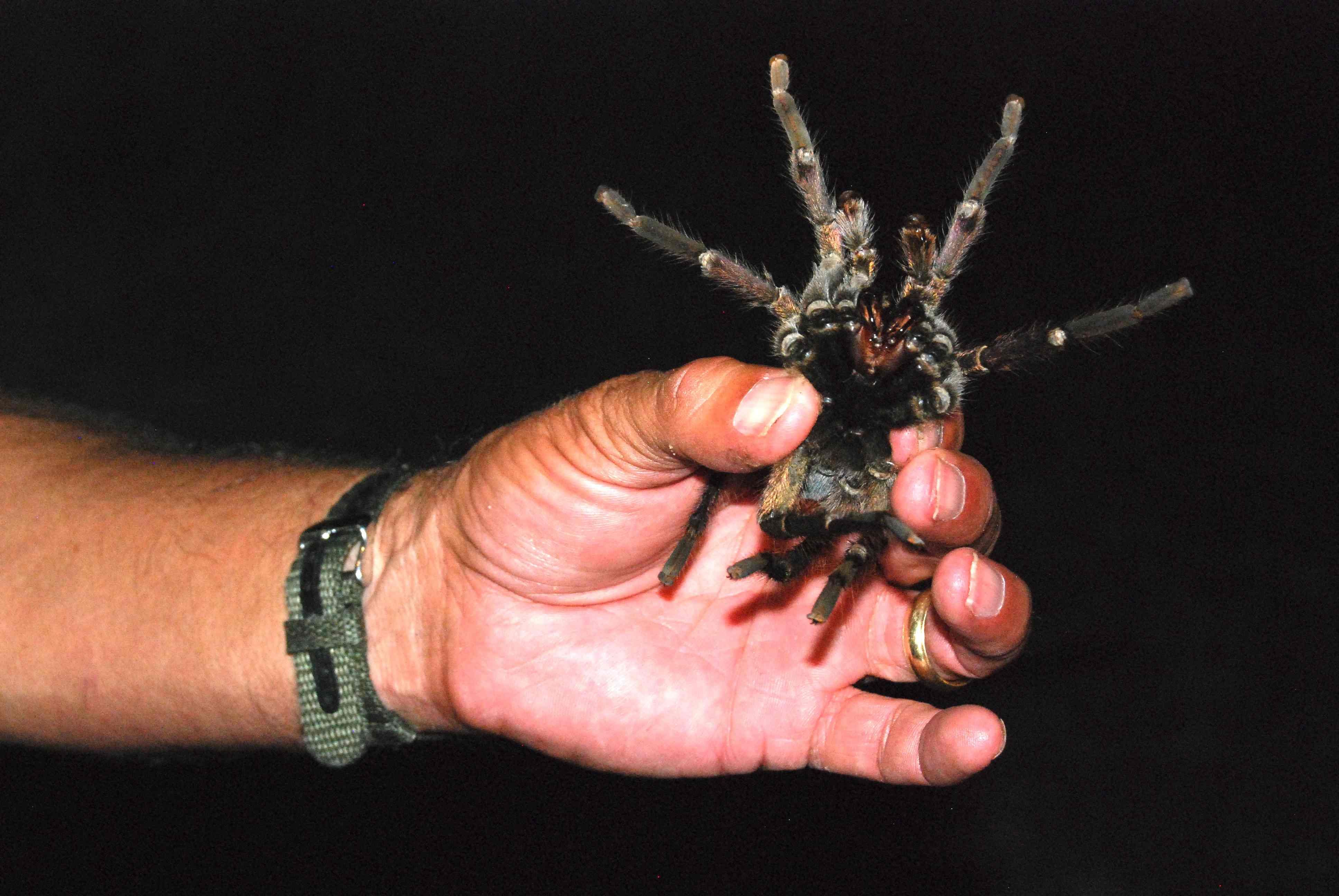Toledo Zoo herpetologist Peter Tolson plans his days around adapting to the lifestyles of the animals he studies at Gitmo. Early in the morning he heads to the dry hills on base to survey the rare Cuban rock iguanas living there. Some days, this requires checking with base staff to see if the target ranges are active, or 'hot,' which can mean that the roads to his survey sites are closed.
At the entrance to Windmill Beach, one of the most popular public beaches for residents and families, Tolson and his Toledo Zoo colleague Candee Ellsworth begin their hike up the cliffs west of the beach. The landscape is craggy, covered in cacti and rocks that on closer viewing are clearly fragments of coral fossils. Already the sun is searing, and Tolson and Ellsworth take each step carefully and as silently as possible to avoid frightening the endangered iguanas.
Elsewhere on base, human-iguana interactions can be problematic because of how exposed the animals are to people. Signs at the beaches warn against feeding the iguanas, which are naturally averse to being around people. Once the iguanas have been fed, they will approach humans to get food, which can become dangerous when iguanas are fed so often that they become aggressive. When this happens, they are relocated to more remote areas of the base so that they don't attack people.
But here on the sun-drenched cliffs above Windmill Beach, the iguanas live undisturbed, and so disappear at the slightest sound, as they should to protect themselves in the wild. With each iguana Tolson and Ellsworth sight, they record the animal's location using a global positioning device. The surveys allows the scientists, and base environmental staff, to track the iguanas' movements from survey to survey, as well as the population density in each study area. Registering the number of iguanas is particularly important because Gitmo's iguana population is strong compared to the rest Cuba, where development, habitat destruction and hunting are detrimental to the animals' survival. In fact, The World Conservation Union's Iguana Specialist Group estimates that three to 7.5 percent of Cuba's total rock iguana population lives in Gitmo.
Tolson's work, which is funded the Navy, also involves tagging and tracking the Cuban boa, another threatened species that thrives at Gitmo. After sunset, Tolson and Ellsworth take their headlamps to Graffiti Hill, just past downtown GTMO, to search for the snakes for an educational show for base residents. Not five minutes after beginning their night hike, Tolson spots and quickly catches a boa with just his bare hands—in part because the snake's tail has a wound, perhaps from being attacked by a larger animal, which likely made it weak. Tolson carefully places the boa in a large cloth bag along with a collection that soon includes a toad and brown and green lizards called anoles.
In the dark, crickets sing along with the chirping of the hutia (a Caribbean rodent), and land crabs scurry underfoot. On the way back to the road, with his headlamp Tolson spots the highlight of the day: a massive tarantula, which he carefully plucks from its hiding place in a rock. Tolson is excited about the cache he has found for the show, hoping that, in seeing the wild inhabitants, GTMO's human residents will try to help protect the base's flora and fauna. The tarantula, on the other hand, is not excited, and drips venom from its fangs to show its displeasure at being caught.



